I bought this thing at a farm sale more than 20 years ago.
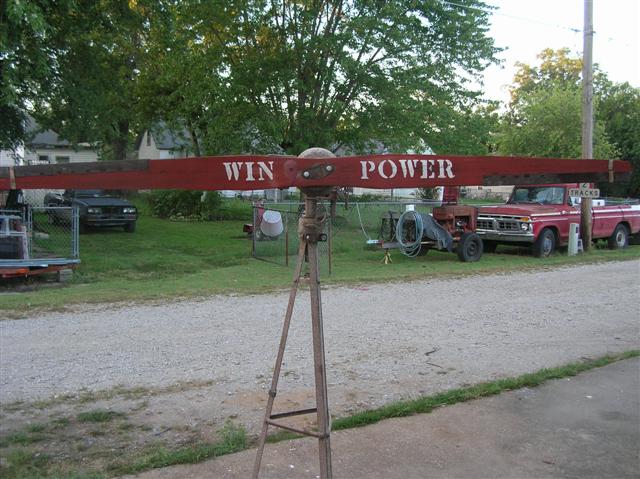
I played with it for a while, tired of it, and sold it to a friend. It has been setting in his shed for all this time and all the metal is rusted. It still spins easy enough, but it need disassembled and lubed, then maybe painted.
Now that I am all gung-ho about this R.E. biz and want to experiment and have a good size amount of batteries to charge, I called the guy I sold it to and asked if he still had it and wanted to sell it back to me.
It is a 6 volt unit. It has the original "charge controller"
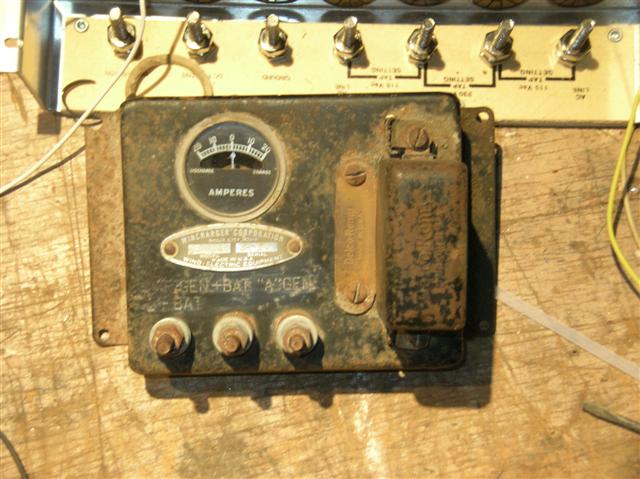

.
The prop is 72" and is made from some light wood- cedar or redwood I am thinking.
It has a couple of balancing weights on it. The teardrop shaped one on the front of the blade- I guess that is a balancing weight? The other is right atop the blade above the teardrop. There is a thin copper sheet wrapped around the cutting edge of both ends of the blade, and another copper strip makes a band around the blade over those.
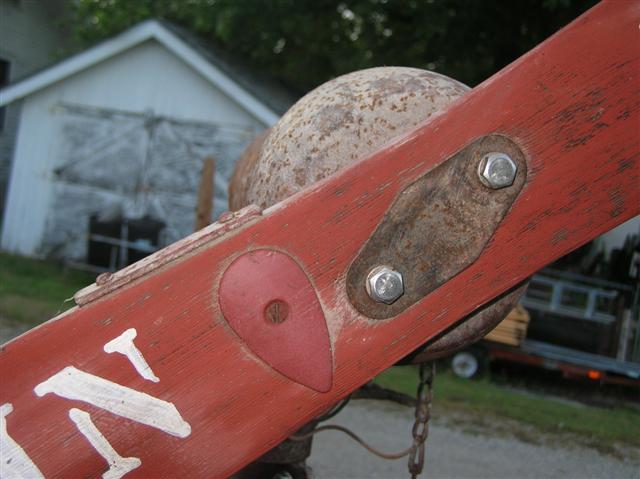
Way back when, my dad painted it and restencilled the name back on it.
When I first got it, it was missing the slip rings or whatever it used to get the power to the wiring system. I cobbled something up and it worked- back then.
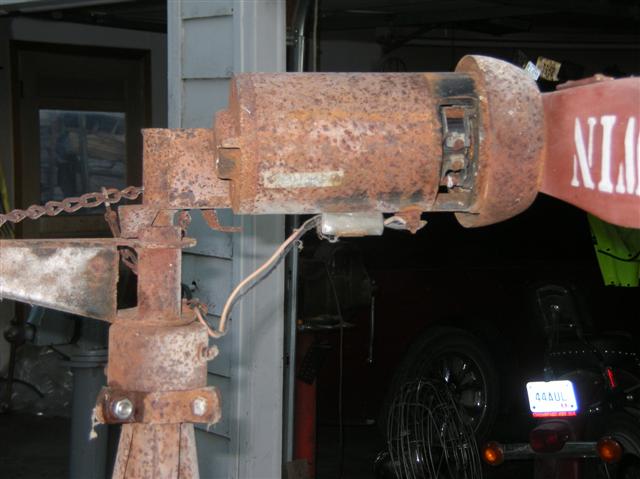
At that time I had it mounted on a 25' tower outside my garage. I had no access to a 6 volt battery. I just ran the wires into the shop and connected them to the control. I had connected a 75 watt light bulb to the control terminals where the generator connected- not regulated. One night it was storming outside something fierce. Wind was howling. I looked out the back door of the house and could hear the blades whirring to beat hell, and a big gust would roar thru and the tail would furl and take the prop out of the windstream, and as the wind would subside, the spring would pull the tail back in line and the thing would roar back to life!
I ran out to the garage and went back to where the control was (with the light bulb attached) and stood there and watched. While the wind was not so fierce, that bulb would glow dimly. But, when a gust would roar thru- that bulb would light up as if I had it plugged into a wall socket!-

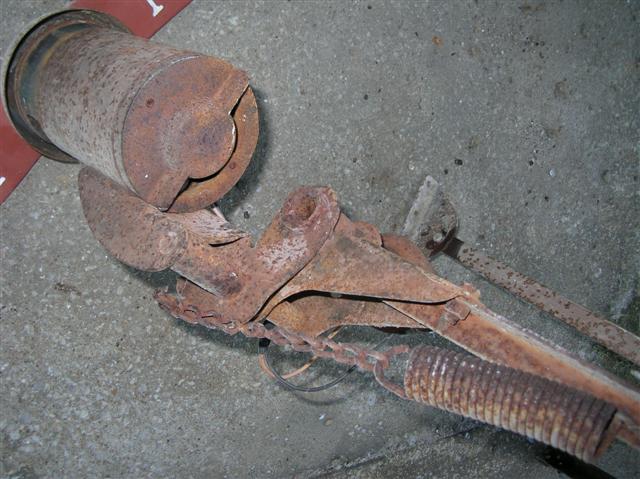
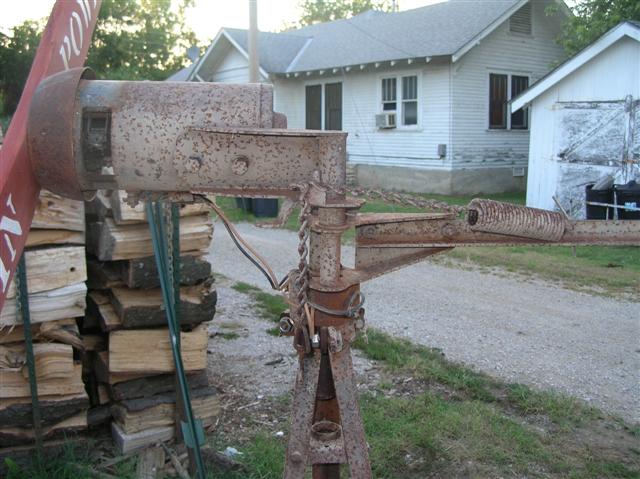
Not real good pix, but I wanted to show you how it is all assembled.